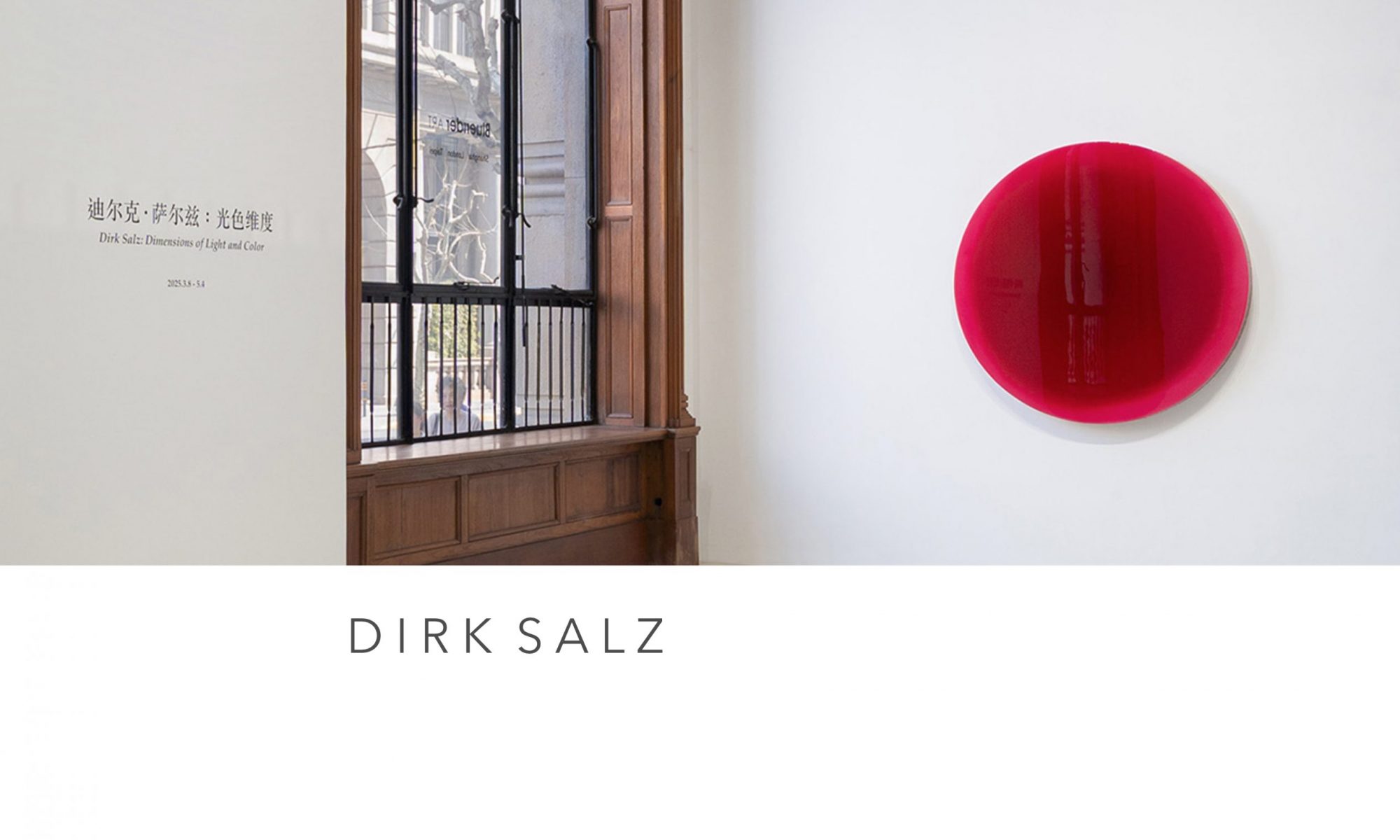Caught up in Things. Reflections on the Paintings of Dirk Salz
by Dr. Martin Hellmold
The painter ‘takes his body with him’, says Valery. Indeed we cannot imagine how a mind could paint. It is by lending his body to the world that the artist changes the world into paintings.[1]
When one stands before the works of Dirk Salz, it becomes impossible to escape the encounter with one’s own act of seeing. To perceive the paintings of Dirk Salz is to move in front of them, searchingly and intuitively, at one’s own pace, with an open and engaged mind, attempting to form an idea of the peculiar balance between emptiness and fullness, between factual materiality and visual appearance, which confronts the viewer. The perception of these works is dependent on the space in which they are displayed, the height at which they are positioned and, above all, the light that fills the surrounding space. The lighting conditions have a decisive influence not only on the colour and luminosity emanating from the artworks – affecting the intensity and gradations of the monochrome forms emerging within the inner space of the images – but also on the reflections on their surfaces, with which we are confronted.
The artistic development of Dirk Salz led from his early beginnings, which were focused on figurative representation, diverse experiments and the exploration of technical skills, to a gradual narrowing of his means and forms, reaching a point of extreme reduction. From there, the artist broadened his questions and visual language through engagement with fundamental philosophical reflections, as he found them discussed by thinkers such as Kant, Schopenhauer and others, as well as through analysis of positions in recent art history. Particularly influential were the colour theory and practical studies of Josef Albers and, most notably, Concrete Art. The evolution of this movement since the 1970s, as seen in the work of Imi Knoebel, demonstrates a significant connection to Minimal Art, which also played an important role in shaping Dirk Salz’s approach. Crucial inspiration for Salz also came from his engagement with the ‘abstract sublime’ of American Modernism, especially the large-scale paintings – tending towards dualistic or monochrome colour choices – of Mark Rothko, Barnett Newman and Ad Reinhardt. Newman’s exploration of ‘[m]an’s natural desire in the arts to express his relation to the Absolute’,[2] which he pursued not only in his works but also in his writings, can likewise be understood as a reference point for Dirk Salz’s artistic interests.
„Caught up in things. Reflections on the Paintings of Dirk Salz – Dr. Martin Hellmold“ weiterlesen

